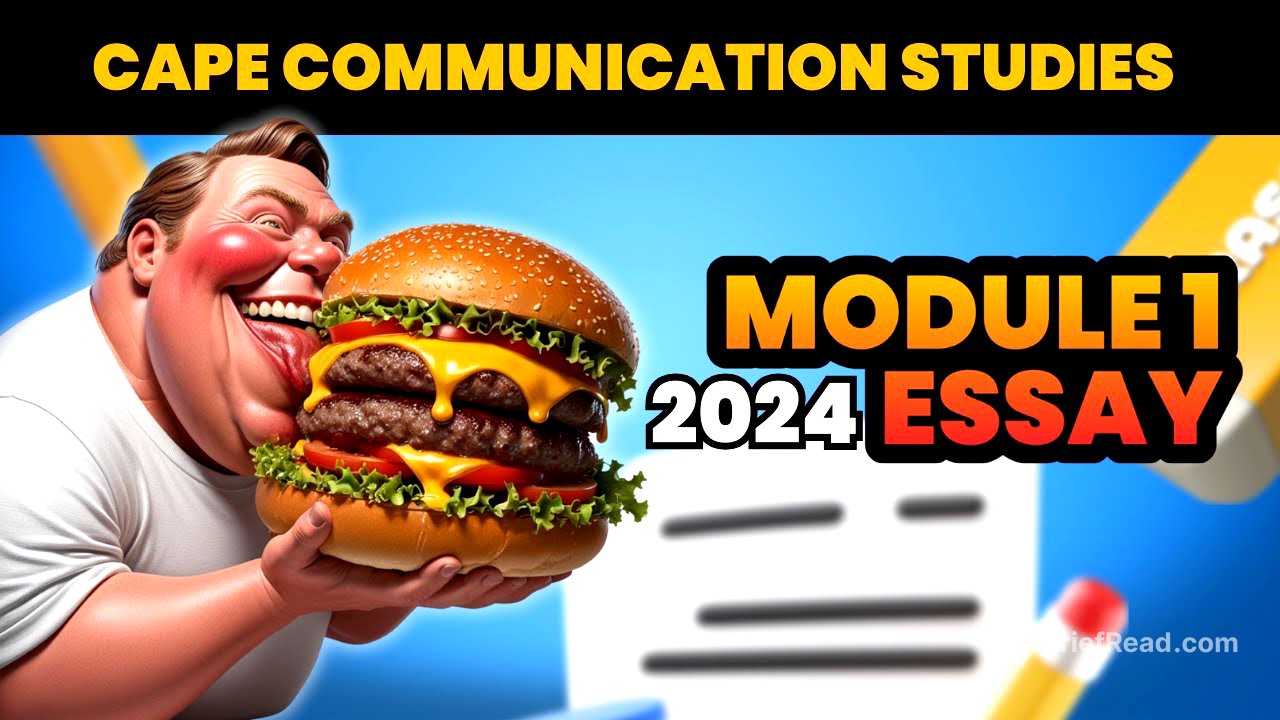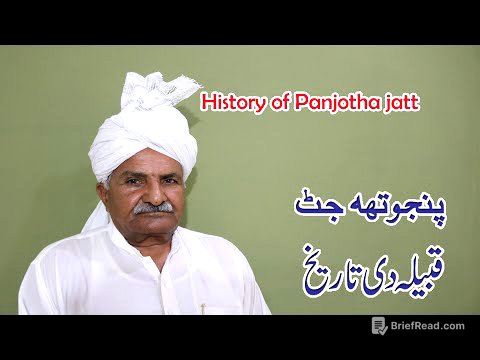TLDR;
This video provides a detailed analysis of an extract about the harmful nature of the word "obese," offering insights into organizational strategies and language techniques used by the author. It also includes a sample essay demonstrating how to structure an effective response, focusing on identifying and explaining the use of definition, ethmology, and imagery. The video further discusses how to assess the credibility of a source using the CRAP test (Currency, Relevance, Authority, Accuracy, Purpose) and provides guidance on crafting a strong introduction, body paragraphs, and conclusion for essays.
- Analysis of organizational strategies and language techniques in an extract.
- Sample essay structure with hook, leading statement, and thesis.
- Explanation of the CRAP test for evaluating source credibility.
- Guidance on writing effective introductions, body paragraphs, and conclusions.
Introduction [0:00]
The video begins with a brief introduction, acknowledging the informal recording setup due to time constraints. The speaker emphasizes the importance of the content, directing viewers to the notes in the description box. The focus is on analyzing an extract to identify organizational strategies and language techniques, with a promise to show how to pick them from the extract.
Analysis of the Extract [0:55]
The speaker starts by examining an extract, identifying the author's use of authority by mentioning Dr. Alfred, a laparoscopic and weight loss surgeon, to frame the argument. The speaker also points out the appeal to authority through referencing a well-researched column in "The Gleaner," a reputable Jamaican source. The repeated use of inverted commas around the word "obesity" is highlighted as a technique to draw attention to the connotation versus denotation of the word. Listing is mentioned as a potential organizational strategy, although not heavily emphasized. The author's purpose is identified as advocating for the abandonment of the word "obese" due to its harmful and hurtful nature. The speaker also notes the use of definition and ethmology, explaining the origin of the word "obese" from the Latin "obesus," meaning "eats until fat." Statistics, specifically the 5% success rate of permanent weight loss, are identified as a means to add credibility to the argument. Subheadings are noted as an organizational strategy that helps guide the reader through the argument.
Language Techniques: Imagery and Illusion [6:12]
The speaker identifies imagery as a language technique, citing the description of an "extremely large person chowing down on a massive mount of food stuff." Illusion is also identified through the author's allusion to the seven deadly sins, particularly gluttony and sloth, when describing obese individuals. The speaker continues to identify listing as an organizational strategy, noting how the author lists biases against overweight people and the various factors contributing to excessive weight, such as nutritional environment, socialization, and modern society. Pathos is identified as a language technique used throughout the extract, appealing to the reader's emotions to question the fairness of using the word "obese." Technical jargon, such as "laparoscopic," and repetition of the word "obese" are also mentioned.
Sample Essay: Organizational Strategy and Language Technique [14:09]
The speaker transitions to discussing a sample essay, explaining the choice of definition and ethmology as an organizational strategy and imagery as a language technique. The CRAP test (Currency, Relevance, Authority, Accuracy, Purpose) is introduced as a method to evaluate the credibility of the source. For this extract, authority and accuracy are highlighted due to the author's medical background and the alignment of information with other sources.
Essay Structure: Introduction, Body, and Conclusion [17:46]
The speaker breaks down the essay structure, starting with the introduction, which includes a hook, leading statement, and thesis statement. The hook is designed to grab the reader's attention, while the leading statement introduces the writer's main point and purpose. The thesis statement outlines the essay's argument. The speaker emphasizes the importance of the elementary frame in developing the argument.
Body Paragraphs: Point, Example, Explanation [20:35]
The speaker details the structure of body paragraphs, emphasizing the "paragraph sandwich" approach: point (topic sentence), example/evidence, and explanation/elaboration. The topic sentence should clearly state the focus of the paragraph, and the explanation should sufficiently explain how the chosen strategy or technique helps the writer achieve their purpose. Transition words or phrases should be used to link paragraphs. The speaker stresses the importance of explicitly stating whether a technique is a language technique or an organizational strategy to ensure the marker recognizes it.
Credibility and Conclusion [26:07]
The speaker discusses the credibility of the source, emphasizing the relevance and accuracy of the information provided by G. Ratray, a medical doctor with a family practice. The speaker concludes by discussing the importance of a well-developed conclusion that summarizes the main points of the essay and reiterates the piece's purpose. The speaker advises that if a conclusion cannot be effectively developed, it is better to omit it. The speaker wraps up by mentioning that the module 2 essay will be released soon.









